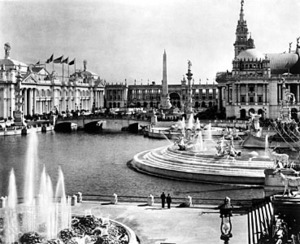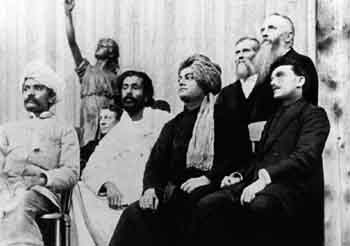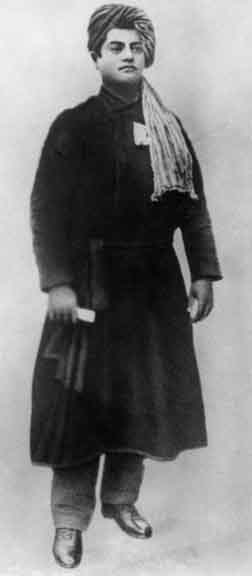The 1893 World's Fair
The Fair
The World's Columbian Exposition of 1893 was held to celebrate the 400th anniversary of Christopher Columbus' discovery of America in 1492 and to showcase the fruits of man's material progress and the achievements of Western civilization.
The fair had a profound effect on architecture, sanitation, the arts, Chicago's self-image, and American industrial optimism. The exposition covered more than 600 acres (2.4 km2), featuring nearly 200 new (but purposely temporary) buildings of predominantly neoclassical architecture, canals and lagoons, and people and cultures from around the world. More than 27 million people attended the exposition during its six-month run.
The World's Columbian Exposition was the first world's fair with an area for amusements that was strictly separated from the exhibition halls. The Fair bore testimony to several firsts -- the Ferris Wheel made its first appearance, the United States Post Office produced its first picture postcards, phosphorescent lamps (the predecessor of fluoroscent lamps) were introduced, Cracker Jack and Quaker Oats were introduced for the first time, the first fully electrical kitchen including an automatic dishwasher was demonstrated, among others.
The Greatest Themes
The Exposition would not have been complete without a representation of the world's thought. Neely's History of the Parliament of Religions tells us that the idea of a series of congresses for the consideration of "the greatest themes in which mankind is interested, and so comprehensive as to include representatives from all parts of the earth originated with Charles Carroll Bonney in the summer of 1889". A committee was formed, and on October 30, 1890, the World's Congress Auxiliary of the Columbian Exposition was organized. Over the next two and half years elaborate plans were made involving an untold number of letters to and from all corners of the earth. The congresses, which finally met between May 15 and October 28, 1893 were twenty in all and embraced diverse things as woman's progress, the public press, medicine and surgery, temperance, commerce and finance, music, and -- "since faith in a Divine Power ... has been like the sun, a light-giving and fructifying potency in man's intellectual and moral development" -- religion. Of these congresses the Parliament of Religions was by far the most famed and widely heralded.
The Parliament of Religions
The Parliament was a unique phenomenon in the
history of religions. Never before had representatives
of the world's great religions been brought together in
one place, where they might without fear tell of their
respective beliefs to thousands of people. The proposed
objectives were (Ref. World's Parliament of
Religons, ed. John Henry Barrows, 1893)
1. To bring together in coference, for the first time
in history, the leading representatives of the great
Historic Religions of the world. 2. To show to men, in
the most impressive way, what and how many important
truths the various Religions hold and teach in
common...4. To set forth, by those most competent to
speak, what are deemed the most important distinctive
truths held and taught by each Religion and by the
various chief branches of Christendom...7. To inquire
what light each Religion has afforded, or may afford,
to the other Religions of the world...9. To discover
from competent men what light light Religion has to
throw on the great problems of the present age,
especially the important questions conncected with
Temperance, Labor, Education, Wealth and Poverty. 10.
To bring the nations of the earth into a more friendly
fellowship in the hope of securing permanent
international peace."
September 11, 1893
The Parliament of Religions opened on the morning of September 11, 1893 at the newly constructed Art Institute of Chicago (before it had started housing the art exhibits for which it is now famous). The delegates for the Parliament gathered at the Hall of Columbus which could accommodate 3000 people with standing room for at least a thousand more.
At ten o'clock, ten solemn strokes of the New Liberty Bell which was inscribed "A new commandment I give unto you, that ye love one another", proclaimed the opening of the Parliament -- each stroke of the bell representing one of the ten chief religions — Theism, Judaism, Mohammedanism, Hinduism, Buddhism, Taoism, Confucianism, Shintoism, Zoroastrianism, Catholicism, the Greek Church, and Protestantism.
Four thousand had crowded onto the floor and into the gallery of the Hall of Columbus waiting for the delegates to appear. At ten, the group of delegates in a procession entered the back of the auditorium, the crowd making way for it. Then beneath the flags of many nations and amid wave upon wave of cheers it marched down the center aisle and ascended the platform. In the midst of this array sat Swami Vivekananda, conspicuous, according to all accounts, for his "orange turban and robe," or, as put by another delegate, for his "gorgeous red apparel, his bronze face surmounted with a turban of yellow."
The first day, September 11, was devoted to speeches of welcome from the officials and responses by the delegates. Through it all, Swami Vivekananda remained seated, meditative, and prayerful, letting his turn to speak go by time and again. It was not until the afternoon session, and after four other delegates had read their prepared papers, that he arose to address the congress.
The electric effect on the audience of the first
words Swami Vivekananda spoke is well known. Neely's
History comments that when Mr Vivekananda
addressed the audience as 'Sisters and Brothers of
America,' there arose a peal of applause that lasted
for several minutes.
Mrs. S.K. Blodgett, who much
later became Swamiji's hostess in Los Angeles, recalled
I was at the Parliament ...When that young man got
up and said, 'Sisters and Brothers of America,' seven
thousand people rose to their feet as a tribute to
something they knew not what."
The applause that
had punctuated Swamiji's talk thundered at its close.
The people had recognized their hero and had taken him
to their hearts; thenceforth he was the star of the
Parliament.
The full text of his speech at the opening of the Parliament can be read here.
Vivekananda at the Parliament of Religions
One description of Swami Vivekananda at the
Parliament comes from the Chicago Advocate, a
journal that was not entirely favorable to him. In
certain respects, the most fascinating personality was
the Brahmin monk, Suami [sic] Vivekananda with his
flowing orange robe, safforn turban, smooth-shaven,
shapely handsome face, large, dark subtle penetrating
eyes, and with the air of one being inly-pleased with
the consciousness of being easily master of his
situation. His knowledge of English is as though it
were his mother tongue.
In addition to the plenary
sessions at the Parliament, Vivekananda addressed the
Scientifc Section several times. Unfortunately
the talks were not taken down and hence are missing
from the reports. Nevertheless, Dr. Barrows' book lists
the dates:
- September 22, Friday morning: Conference on Orthodox Hinduism and the Vedanta Philosophy
- September 22, Friday afternoon: with Mr. Merwin-Marie Snell conducted a Conference on the Modern Religions of India
- September 23: Conference on the subject of the Rinzai Zen on Japanese Buddhism
- September 25: The Essence of the Hindu Religion
The Chicago Inter Ocean of September 23
contains the following report: In the Scientific
Section yesterday morning, Swami Vivekananda spoke on
Orthodox Hinudism. Hall 3 was crowded to
overflowing and hundred of questions were asked by
auditors and answered by the great Sannyasi with
wonderful skill and lucidity. At the close of the
session he was thronged with eager questioners who
begged him to give a semi-public lecture somewhere on
the subject of his religion. He said that he already
had the project under consideration.
After the opening day, Swamiji again spoke on
September 15. His talk Why We Disagree can be
found in the Complete Works of Swami Vivekananda Vol.
1. On September 19, he presented his now-famous "Paper
on Hinduism". The Chicago Herald called his
speech one of the most interesting features of the
day.
It was in this speech that he laid out his
idea of a universal religion.
It will be a religion which will have no place for persecution or intolerance in its polity, which will recognize divinity in every man and woman, and whose whole scope, whose whole force, will be created in aididing humanity to realise its own true, divine nature.
On September 20, he spoke again at the end on Religion not the crying need of India On September 26, he gave a talk on Buddhism, the fulfilment of Hinduism According to Life, he spoke on at least three other occasions. On September 22, in Hall VII, he spoke at a special session organized by Mrs. Potter Palmer of the Woman's Branch of the Auxiliary, on Women in Oriental Religion. On September 23, he spoke before a session of the Universal Religious Unity Congress. On September 24, he spoke on "Love of God" at the Third Unitarian Church at the southeast corner of Monroe and Laflin.
Assimilation and not Destruction
On September 27, the final day of the Parliament, Swami Vivekananda gave his final address concuding it with the rousing call
... upon the banner of every religion will soon be written, in spite of resistance: ‘Help and not Fight,’ ‘Assimilation and not Destruction,’ ‘Harmony and Peace and not Dissension.’
If that call for assimilation and not
destruction
was relevant then, it is all the more
relevant today, and it is incumbent upon us to take the
message of assimilation, harmony and peace to heart. In
this year of Swami Vivekananda's 150th birth anniversary, the
Vivekananda Vedanta Society of Chicago invites you to
join us in a special program celebrating that call.
Chicago Calling
Credits:
Swami Vivekananda in the West, New Discoveies Vol.1, by Marie Louise Burke
Swami Vivekananda in Chicago, New Findings, by Asim Chaudhuri
Neely's History of The Parliament of Religions
Life of Swami Vivekananda, by his Eastern and Western disciples.






